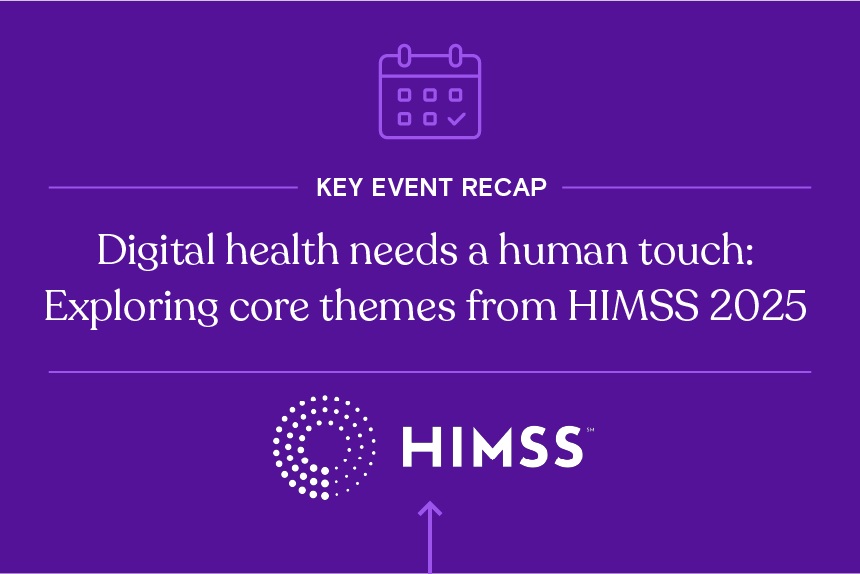Updated June 2020
How has telehealth utilization changed from 2019 to 2020?
When this blog was first published in April 2019, telehealth and telemedicine implementation were surprisingly low considering the range of technology solutions available to healthcare providers. According to 2019 Definitive Healthcare data, only about 33 percent of inpatient hospitals and 45 percent of outpatient facilities offered telehealth services to their patients.
Since then, a continuing interest in convenient care options and the COVID-19 pandemic have spurred a rapid industry-wide increase in telehealth implementation. Now, about 75 percent of U.S. hospitals are using telehealth and telemedicine systems—a 42 percent increase from 2019 usage.
Why was telehealth utilization so low in the past?
There are risks associated with using any healthcare technology, particularly when those systems concern patient data and privacy. Here are some of the reasons why providers may have been slow to implement telehealth systems in the past:
1. Fraud & data security
In 2019, federal investigators charged a telemedicine company CEO for his part in one of the nation’s largest healthcare fraud schemes. The company was involved in fraudulently billing Medicare beneficiaries for back, shoulder, wrist, and knee braces that were not medically necessary—a scheme that totaled $1.2 billion in Medicare losses.
Telehealth companies have been involved in similar schemes more recently, as well. In April 2020, a Georgia-based telemedicine company was accused of obtaining illegitimate orders for $60 million worth of durable medical equipment that was then billed to Medicare.
Nefarious charges like these slowed investment in virtual care technologies.
2. Healthcare policy
Federal policies and regulations have also stalled telehealth adoption within the past several years. It wasn’t until late 2018 that the Centers for Medicare and Medicaid Services (CMS) expanded telehealth and virtual care services for Medicare Advantage beneficiaries. However, this expanded care access did not go into effect for Medicare beneficiaries until the 2020 plan year.
Without a reimbursement plan in place for virtual care delivery, healthcare providers had little reason to offer comprehensive telehealth services.
3. Cost
Cost may have been one of the most significant barriers to widespread telehealth adoption. When deciding to implement a new system or technology, healthcare executives must consider if the benefits and practical applications are worth what could be a significant financial investment. There may be additional costs associated with training staff in this new technology as well, which could hinder a healthcare facility’s choice to implement new systems.
With limited payer reimbursement for telemedicine services in recent years, only a small number of patients would be eligible to receive coverage for virtual care—a fact that might have dissuaded many hospitals and care facilities from investing in costly telehealth technologies.
Which telehealth vendors have the largest market share in 2020?
Zoom, a video conferencing software, has quickly become one of the most-used conferencing technologies among consumers in 2020—with a record 2.2 million new monthly users added as of February 2020 because of the COVID-19 pandemic. Zoom also happens to be the most-used telemedicine software among healthcare providers as well, with 1,032 total installations reported as of early 2020.
This highlights how much telehealth utilization has changed since 2019, when virtual care services were still fairly limited in practice and more specialized in nature. According to Definitive Healthcare data, for instance, a radiology and teleradiology company called vRad held the leading vendor market share in telemedicine technologies in 2019—with 29 percent of the total share.
Top 10 telemedicine vendors by market share
| Rank | Vendor Name | Total Number of Installations | Market Share (%) |
|---|---|---|---|
| 1 | Zoom | 1,032 | 25.85 |
| 2 | Cisco Systems | 489 | 12.25 |
| 3 | vRad a MEDNAX Company | 376 | 9.42 |
| 4 | InTouch Health | 317 | 7.94 |
| 5 | Vidyo | 277 | 6.94 |
| 6 | American Well | 235 | 5.89 |
| 7 | Doxy.me | 229 | 5.74 |
| 8 | Philips Healthcare | 227 | 5.68 |
| 9 | Polycom | 222 | 5.56 |
| 10 | Proprietary Software | 218 | 5.46 |
Fig 1 Technology insights data is from Definitive Healthcare’s Hospitals & IDNs database. Information about technology vendor market share is from the LOGIC vendor market share dashboard on the DHC Visuals platform. Data reflects total number of installations as of Q2 2020. Technology installation data is proprietary Definitive Healthcare data and is updated on a continuous basis. Accessed June 2020.
According to 2020 data, however, vRad’s total market share has dropped to just 9.42 percent behind Zoom and Cisco Systems—both video conferencing technology vendors. In fact, 7 of the top 10 telemedicine vendors offer video conferencing or video-enabled technologies.
This trend in video-enabled telehealth technologies not only addresses the growing patient interest in fast, ultra-convenient healthcare options, but also paves the way for a new future in virtual healthcare delivery.
How will COVID-19 impact telehealth utilization in the future?
The COVID-19 pandemic began quickly spreading across the U.S. in early March 2020 and, in response, the Trump Administration announced an even greater expansion to telehealth coverage for Medicare beneficiaries. The purpose of this expansion and other regulatory actions is to ensure that all Americans—particularly those most vulnerable to COVID-19 exposure—could receive safe, virtual consultations with doctors, nurse practitioners, and clinical psychologists.
With the pandemic, most healthcare providers have significantly increased their telemedicine use and have begun adapting to a “new normal” in which all non-urgent or non-essential care is administered virtually. Though it’s difficult to know how the pandemic will affect telehealth utilization going forward, many in the healthcare industry agree that these technologies will likely be more widely used than they were before.
Some have even suggested that the COVID-19 pandemic will pave the way for many new telehealth strategies in the near future. These might include remote patient screenings with telemedicine triage, continuous care with increased use of remote patient monitoring, and a new model of inpatient care with systems that allow providers to check in on patients without entering their room.
Learn more
Interested in learning more about growing telehealth implementation and how the U.S. healthcare industry is adapting in the wake of the COVID-19 pandemic? Catch our on-demand webinar, Updated Healthcare Industry Trends: Selling to Doctors and Hospitals in a Changed Market.
Definitive Healthcare CEO, Jason Krantz, discusses three major trends that have emerged as a result of the COVID-19 pandemic, including:
- The role of elective surgeries in provider recovery
- The ramifications of postponing essential care, and
- The mainstream role of telemedicine in healthcare





